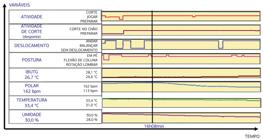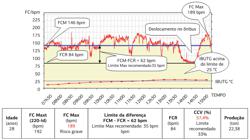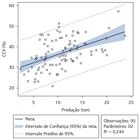Background: the sugar-cane sector is quickly expanding in Brazil in the recent years accounting for about 400 processing plants, more than a thousand support industries and generating one million direct jobs.
Objective: to understand the organizational determinants that lead to the intensification of the workload and affect the health of manual sugar-cane cutters.
Methods: we performed the Work Ergonomic Analysis integrated into the assessment of physiological and environmental aspects. A team of 40 sugar-cane cutters was chosen by convenience. Each worker was assessed for thermal overload, as well as the heart rate and daily production.
Results: the findings showed that sugar cane manual cutting consists on average of 8 hours of daily activity, with intense work rhythms, high frequency of repetitive movements and inadequate postural requirements associated with unhealthy working conditions.
Conclusion: The harmful effect of the physiological variables and the increase of cardiovascular load were demonstrated. The work pace is accelerated by managerial and organizational measures, especially the payment by production, responsible for increasing the physical exhaustion of workers and inducing them to exceed their physiological limits. It is recommended, among other measures, an alteration in the form of remuneration of the sugar-cane cutters.
sugar cane; ergonomics; exhausting working conditions; occupational health

 Thumbnail
Thumbnail
 Thumbnail
Thumbnail
 Thumbnail
Thumbnail

 Limite do IBUTG: 25 °C FCR: Frequência cardíaca de repouso, medida antes do início da atividade (bpm) FC Maxt: Frequência cardíaca máxima teórica FCM: Frequência cardíaca média durante a jornada (bpm) FC Max: Frequência cardíaca máxima do sujeito, medida durante a jornada (bpm) CCV: Carga cardiovascular Limite da diferença: Quando a diferença da FCM menos a FCR ultrapassa 35 batimentos por minutos
Limite do IBUTG: 25 °C FCR: Frequência cardíaca de repouso, medida antes do início da atividade (bpm) FC Maxt: Frequência cardíaca máxima teórica FCM: Frequência cardíaca média durante a jornada (bpm) FC Max: Frequência cardíaca máxima do sujeito, medida durante a jornada (bpm) CCV: Carga cardiovascular Limite da diferença: Quando a diferença da FCM menos a FCR ultrapassa 35 batimentos por minutos
